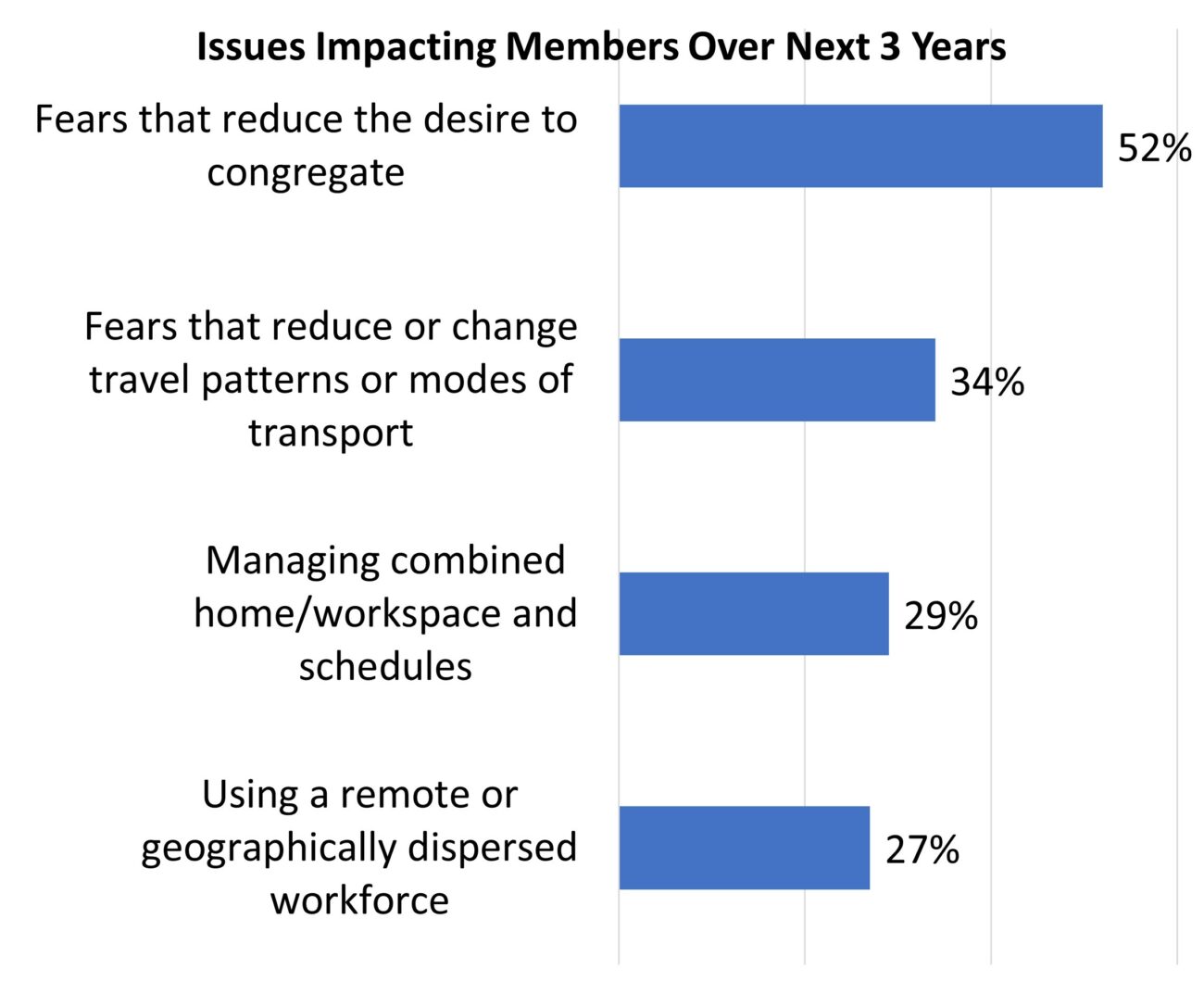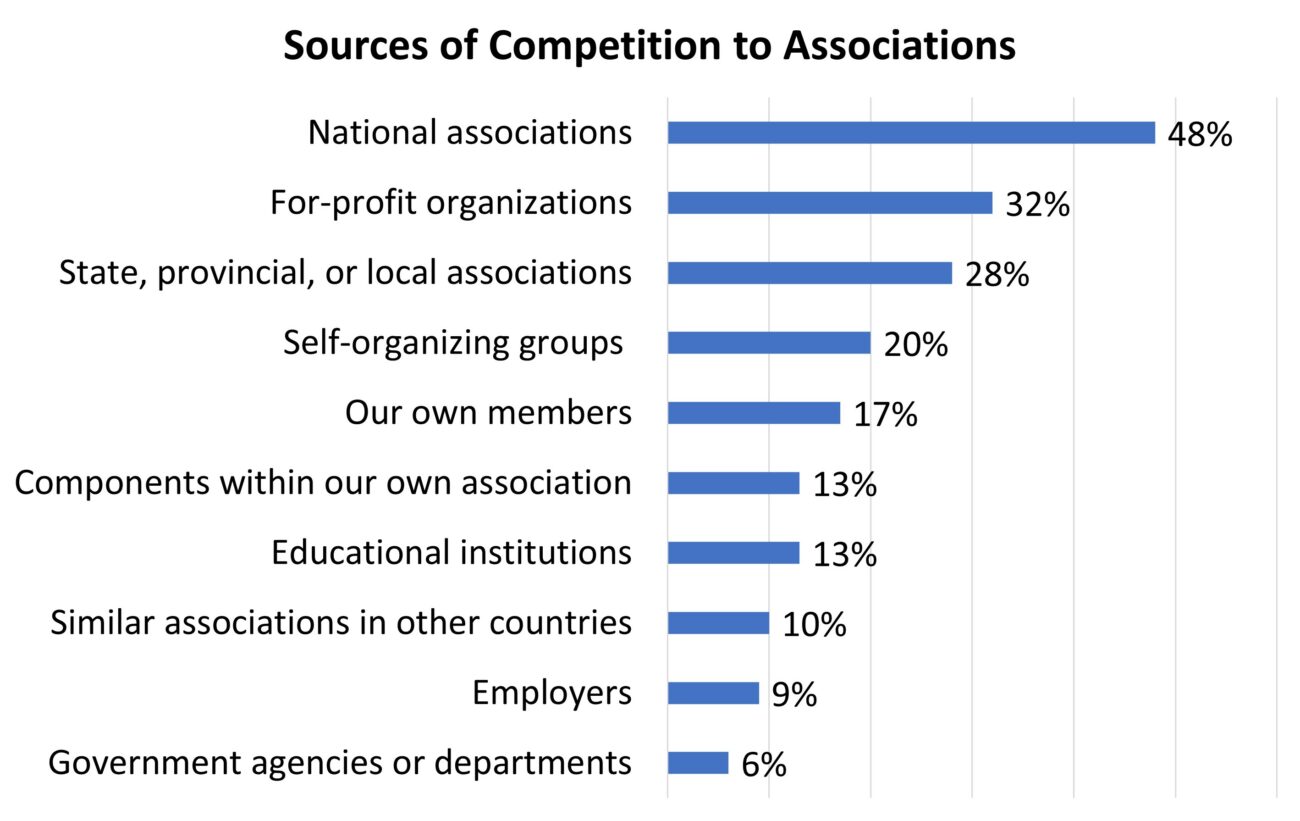In the business community a Black Swan is an event or occurrence that deviates beyond what we expect. Something that would be extremely difficult to predict. A surprise beyond our comprehension.
On 12 March 2020, I arrived at an association congress in San Diego, California USA to lead a strategic planning exercise. Eight hundred kilometers north of San Diego, in the state’s capitol of Sacramento, Governor Gavin Newsome spoke at a press conference. His comments, quickly referred to as the Newsome 250 Policy, encouraged cancelling meetings with more than 250 attendees.
The event was cancelled that day, and more than 400 attendees were told to stay home.
What began as a strategic planning exercise for 30 people now included only nine. In a huge, empty ballroom at the Paradise Point Hotel in San Diego, a group of association leaders thought about what to do next.
The End of History
In January 2020, did you consider the impact of a worldwide pandemic on your personal, professional, and organizational lives?
When you met with your Board of Directors or staff team and considered your business assumptions, did you take a pandemic into account?
For all of us, the COVID-19 pandemic signaled the end of history. Our business assumptions at the start of the year became like so much construction rubble on the ground. The historical assumptions that drove our strategy (and limited our creativity) ended with the COVID-19 pandemic.
The result? Your association’s business assumptions must be reviewed, revised and validated.
Looking Forward to a New Professional and Business Climate
To help association leaders make better decisions, Association Laboratory produced the 10th anniversary edition of the company’s industry leading environmental scan Looking Forward® (Impact) 2021. You can access this information via the Looking Forward® Dashboard.
The Looking Forward® Dashboard provides free access to Association Laboratory’s three association sector research studies including the following.
- Looking Forward® (Impact)
- Looking Forward® (Solutions)
- Looking Forward® (DEI)
You can customize the data and download the information you need to lead conversations with your Board of Directors or staff team.
Looking Forward® (Impact) 2021 provides association leaders with a picture of the forces influencing members’ professional and business environment and the implications on association strategy.
To collect this data, Association Laboratory deployed an online survey in collaboration with the Association Laboratory Research Alliance to a global sample of association executives. Data collection took place between 12 November and 8 December 2020.
The study assessed factors affecting the association environment in six domains:
- Economic Factors — issues regarding the financial and competitive outlook of association members’ industry or profession.
- Information & Technology Factors — issues regarding the technology and communications underpinning industry and professional activity.
- Workforce Factors — issues regarding the movement, engagement, and competencies of workers in association members’ industry or profession.
- Government Factors — issues regarding the relationship between association members and local, state and federal governments.
- Global Factors — issues regarding relationships between individuals, companies and governments across international boundaries.
- Uncertainty and Adaptation Factors — issues regarding association members’ psychological outlook and their response to rapid and unpredictable change.
More than 600 state, provincial, national and global association leaders responded to this study. It is the most recent, relevant, and comprehensive study of the association strategy environment in the world.
6 Strategic Influences on Association Strategy
Looking Forward® (Impact) collected information on 76 factors influencing association members. Based on an analysis of this data, Association Laboratory identified six strategic influences on association strategy.
- COVID-19 Aftermath
- Reimagining of Space
- Economic Disruption
- Workforce Realignment
- Technological Interconnectedness
- Competition
The following section highlights the data and implications for decision-making for each area.
COVID-19 Aftermath
The adaptation of industries to the changes driven by the pandemic will take years.
Using three years as a timeframe, 57% of respondents identified the long-term cost of adapting to COVID-19 as a significant force impacting members. When asked to identify the nature of this impact, respondents also identified the following as significant.

- 58% identified adoption of virtual office, service, or production models
- 52% identified space, process or staffing reconfigurations to adapt to COVID-19
- 35% identified evolving virtual, distributed, or other decentralized business models
Industries and professions are re-thinking every aspect of how they operate due to the pandemic.
The Reimagining of Space
Historically, an average day for many of us involved a commute. We would leave our home to drive or take public transit to work. We would take our children to school. Midday, we might meet colleagues for a meal and, after work, travel to a local pub or restaurant to meet friends.
Our day involved moving from cell to cell to accomplish our personal and work life.
Following the pandemic, many of us have now moved from a life based on these cells to one based on a central core. Everything—shopping, exercise, work, school, childcare, entertainment, etc.—now resides within this core.
While businesses may be reopening, after 18 months, our behaviors have changed. Our historical habits no longer exist. Now, the day as we currently plan it, is our new reality.
When asked to identify the nature of this impact, respondents identified the following as the most significant.

- 52% identified fears that reduce the desire to congregate
- 34% identified fears that reduce or change travel patterns or modes of transport
- 29% identified managing combined home/workspace and schedules
- 27% identified using a remote or geographically dispersed workforce
The more people and organizations have embraced change, the more likely these changes will become habits. These habits will change how these people relate to their associations.
Economic Disruption
The economic disruption of the COVID-19 pandemic is obvious. From shuttered restaurants to working from home, virtually every industry has been impacted. We are suffering through the transition to a new world.
But this economic disruption also drove creativity. This disruption resulted in innovative programs, products and strategies as organizations adapted, sought revenue or targeted new markets.
While COVID-19-driven innovations will not be abandoned or forgotten, the uncertainty caused by the pandemic will linger. When asked to identify the nature of their concerns, respondents identified the following as the most significant.
- 27% identified price or investment insecurity or cost-conscious behavior
- 25% identified uncertainty about the price of materials, supplies or equipment
When people are uncertain about the future, they are more cautious about buying and investing. The less tangible the return, the less likely people and companies are to take the risk. The association value proposition will need to be distinct and the benefits tangible to be successful.
Workforce Disruption
A disrupted economy creates movement as people seek (or are forced) to consider alternatives.
Sixty-three percent of respondents reported identifying, recruiting and retaining a qualified workforce as a significant factor impacting members. These respondents identified the following as the areas of most concern.
First, it will be critical to create a diverse workforce with an attractive career path.
- 51% cited identifying or developing a more diverse workforce
- 42% identified creating an attractive career path
Second, in the absence of qualified workers, respondents indicated the following.
- 36% of members would be using technology to expand worker capacity
- 30% expected increasing use of virtual, extended, or augmented reality technology
Recent concerns about workforce availability reported in the news validate the issues identified in Looking Forward® (Impact) 2021.
From new people to new competencies to technological extensions or replacements, the workforce is impacted in a substantial way.
Connected Technology
Everyone and everything can communicate with everyone and everything.
Emerging technological forces are accelerating. In particular, the Internet of Things (IoT) is fundamentally altering the strategic environment facing associations.
The IoT is the connection between people, things and data via process. When your doorbell tells you someone is at the door or your car notifies you or your dealer that it needs maintenance, these are examples of the IoT.
The IoT has eliminated traditional boundaries between markets, competitors, people and organizations and devices.
Traditional historical boundaries created by space and boundaries have been effectively eliminated.
Competition
Competition will be fierce.
Organizations are competing for the same share of peoples’ time, money, and energy in a dynamic, disrupted environment.
This competition for associations will come from every direction. Respondents identified the following substantial sources of competition.

- 48% identified national associations
- 32% identified for-profit organizations
- 28% identified state, provincial, or local associations
- 20% identified self-organizing groups such as Facebook or LinkedIn
To be successful, associations will need to innovate, differentiate and execute better than rivals.
Dean West is a globally recognized futurist in the association sector with more than 30 years of experience serving an international client base. Association Laboratory provides strategy consulting services, produces association sector research and develops leadership education and competency development experiences for associations.
Closing
During 2020, the association sector experienced a wave of self-reflection without equal in modern times.
What is our responsibility as organizations to our members, suppliers and communities? What role can we take to help people through challenging times and guide them to resources designed to help them prosper?
Resilient, innovative and compassionate, thoughtful leadership became commonplace.
While these times may have tested us, they have not bested us.
The “construction rubble” referenced at the beginning of this article is, in fact, the building blocks of a renewed profession.
The question we must now answer is, “What are we going to build?”
In the second installment of this three-part series, we’ll identify the strategies that association leaders are believe are critical to success.
